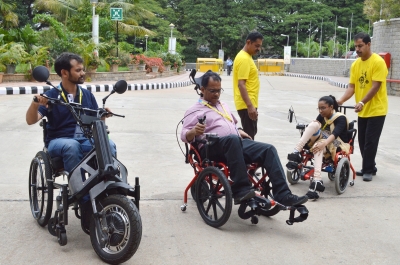Paris, Aug 28 (IANS) The World Health Organisation (WHO) and International Paralympic Committee (IPC) on Wednesday announced to team up and highlight the transformative impact of assistive technology on sports during the 2024 Paralympic Games.
According to WHO estimates, access to assistive technology remains severely limited in many parts of the world, with more than 2.5 billion people in need of assistive technology across the world.
The global health body and IPC will leverage the Paralympics platform to share information focused on the importance of assistive technology, how athletes use it, and why universal access is essential.
Examples of assistive technology used by Paralympians include: running blades, wheelchairs, and release braces in archery.
“The Paralympics show us what is possible, and the important role that assistive technology plays for these extraordinary athletes,” said Dr Tedros Adhanom Ghebreyesus, WHO Director-General.
However, many people still do not have access to crucial assistive technology, due to its high cost and low availability.
“We call on governments, donors, and civil society to prioritise these neglected but critical products, by integrating them in primary care programmes as part of their journey towards universal health coverage,” Ghebreyesus added.
The “Equipped for equity” campaign will also feature personal stories from athletes who rely on assistive technology for sport and in daily life and highlight national successes in advancing access to these critical health products.
“The Paralympic Games are one of the only global events that put persons with disabilities front and centre, and in many events highlight how assistive technology can support athletes to compete at the highest level,” said Andrew Parsons, President, IPC.
Without access to assistive technology, persons with disabilities are denied the right to participate in all aspects of life, and are also more at risk of exclusion, isolation and poverty.
Expanding access to quality-assured, safe, and affordable assistive technology reduces health and welfare costs such as recurrent hospital admissions, and promotes a more productive labour force, indirectly stimulating economic growth.
–IANS
na/


Comments are closed.